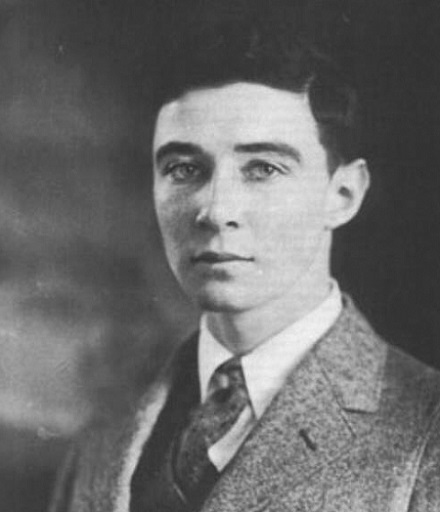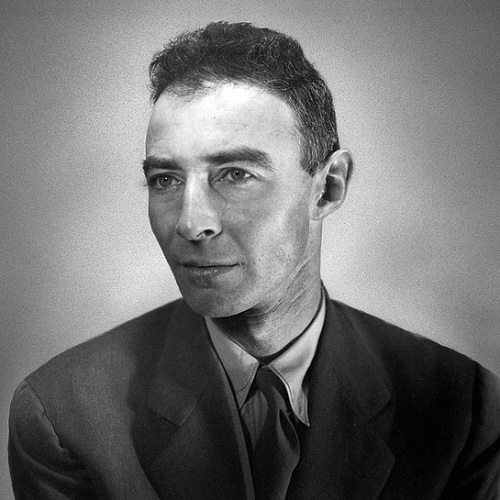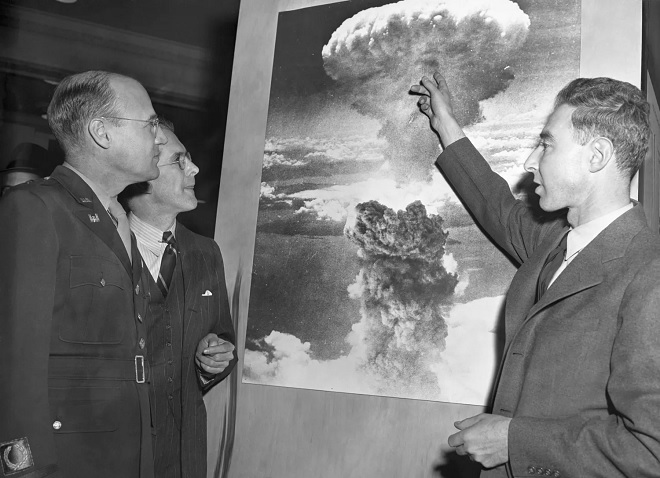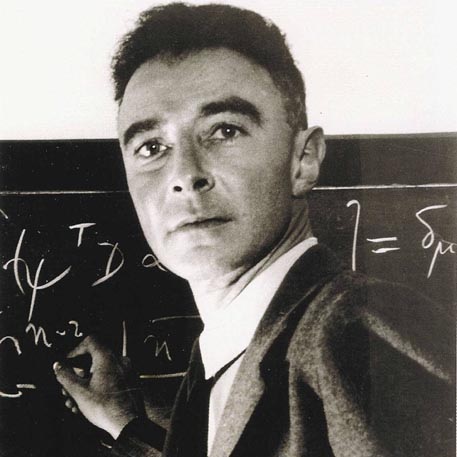Share on:
Who was J. Robert Oppenheimer?
J. Robert Oppenheimer was an American theoretical physicist. During the Manhattan Project, Oppenheimer was director of the Los Alamos Laboratory and responsible for the research and design of an atomic bomb. He is often known as the «father of the atomic bomb.»
Oppenheimer Biography
Julius Robert Oppenheimer was born in New York City on April 22, 1904. His parents, Julius S. Oppenheimer, a wealthy German textile merchant, and Ella Friedman, an artist, were of Jewish descent but did not observe the religious traditions.
He studied at the Ethical Culture Society School, whose physics laboratory has since been named for him, and entered Harvard in 1922, intending to become a chemist, but soon switching to physics. He graduated summa cum laude in 1925; and a doctorate in physics from the University of Göttingen in Germany in 1927. He joined the physics department at the University of California, Berkeley, where he became a full professor in 1936.

In 1942, Oppenheimer was recruited to work on the Manhattan Project, and in 1943 he was appointed director of the project's Los Alamos Laboratory in New Mexico, tasked with developing the first nuclear weapons. His leadership and scientific expertise were instrumental in the project's success.
On July 16, 1945, he was present at the first test of the atomic bomb, Trinity. In August 1945, the weapons were used against Japan in the bombings of Hiroshima and Nagasaki, the only use of nuclear weapons in an armed conflict.
In 1947, Oppenheimer became the director of the Institute for Advanced Study in Princeton, New Jersey, and chaired the influential General Advisory Committee of the newly created U.S. Atomic Energy Commission.
He opposed the development of the hydrogen bomb. Known as the “Super Bomb,” the hydrogen bomb was a thousand times more powerful than the atomic bomb. He took positions on defense-related issues that provoked the ire of some U.S. government and military factions.

Oppenheimer's stances, together with his past associations with the Communist Party USA, led to the revocation of his security clearance following a 1954 security hearing. This effectively ended his access to the government's atomic secrets and thus his career as a nuclear physicist.
Stripped also of his direct political influence, Oppenheimer continued to lecture, write, and work in physics. In 1963, he was awarded the Enrico Fermi Award, which honors the most formidable scientists for lifetime achievement in utilization of energy, as a gesture of political rehabilitation.
Oppenheimer died rather early in life, from throat cancer, at the age of 62. He passed on February 18, 1967, in Princeton, New Jersey.
The Manhattan project
In 1939, scientists around the world learned that Nazi Germany’s scientists had learned how to split a uranium atom. The process is known as nuclear fission and requires a neutron to collide with a uranium atom, which in turn releases an amount of energy that can have devastating consequences.
The U.S. government launched the Manhattan Project in 1942. From there, two secret nuclear facilities were constructed in Oak Ridge, Tennessee, and Hanford, Washington, as well as a laboratory in Los Alamos, New Mexico.
During the Manhattan Project, Oppenheimer was director of the Los Alamos Laboratory and responsible for the research and design of an atomic bomb. He is often known as the «father of the atomic bomb.» While 120,000 people worked at the Manhattan Project, only a handful knew the true goal of the work they were contributing to.

Known as the Trinity test, the first atomic bomb was tested on July 16, 1945, in the Jornada del Muerto desert, more than 200 miles south of Los Alamos. The results were a shock to everyone involved; homes 100 miles away could reportedly feel the explosion and a mushroom cloud ballooned about eight miles into the sky.
Oppenheimer left his post at the Los Alamos facility in November 1945. In his farewell speech, Oppenheimer admitted that the initial reason the team built the bomb was that it was believed using a weapon of that nature might be the only way to win World War II.
After the war, Oppenheimer was appointed Chairman of the General Advisory Committee to the Atomic Energy Commission, serving from 1947 to 1952. It was in this role that he argued against the development of further weapons, including the more powerful hydrogen bomb, which his work had paved the way for.
These efforts resulted in Oppenheimer being investigated by the US government in 1954 and having his security clearance stripped, marking the end of his involvement with policy work. The academic community came to his defence.
Listen to «J. Robert Oppenheimer's oral history» on voices of the Manhattan project.
Oppenheimer Legacy
Oppenheimer's concern for the general public's lack of scientific understanding, and the difficulty of conveying the content of scientific discoveries as well as the exhilaration of the creative act of discovery, led to several popular essays on science. He delivered the Reith Lectures on the BBC in 1953, and these were published under the title «Science and the Common Understanding».

Oppenheimer primarily worked in theoretical physics and made a number of contributions to the field. While he is known for the development of the atomic bomb, the physicist was also responsible for the development of the Born-Oppenheimer approximation, which separates nuclear motion from electronic motion in the mathematical treatment of molecules.
He made important contributions to the theory of cosmic ray showers, and did work that eventually led toward descriptions of quantum tunneling. In the 1930s, he was the first to write papers suggesting the existence of what we today call black holes.
As a scientist, Oppenheimer was remembered by his students and colleagues as a brilliant researcher and engaging teacher who founded modern theoretical physics in the United States. «More than any other man», Bethe wrote, «He was responsible for raising American theoretical physics from a provincial adjunct of Europe to world leadership"».
Along with Albert Einstein, Bertrand Russell, and Joseph Rotblat he established the World Academy of Art and Science in 1960.
Did J. Robert Oppenheimer have a family?
Oppenheimer married biologist Katherine Puening in 1940. Kitty was married a total of three times before she met Oppenheimer. Their first child, Peter, was born in May 1941, and their second, Katherine "Toni", was born in Los Alamos, New Mexico, on December 7, 1944.
Kitty also worked at the Los Alamos facility for a short period of time and was well-known for the dinner parties she threw for the other wives of scientists at the facility. Kitty’s own fiery personality was tested by raising her two children in the unique setting of Los Alamos, before the family moved to Princeton, New Jersey following the war.
She was Oppenheimer's first and most important confidant in all matters of his life. Kitty also struggled with alcoholism and depression, especially following Oppenheimer's death in 1967. She died in 1972 in Panama, after suffering a pulmonary embolism.
🥇 Find out more:
✅ What did Einstein say to Oppenheimer?
🥇 Movie review & film summary:
✅ Oppenheimer: about the father of the atomic bomb
✅ Paradise: selling our age in exchange for money
✅ Sound of freedom: about the world of child sex trafficking
✅ The Pope's exorcist: based on the life of the chief Vatican exorcist
✅ Radioactive: tells the story of Marie Curie, a two-time Nobel Prize winner

